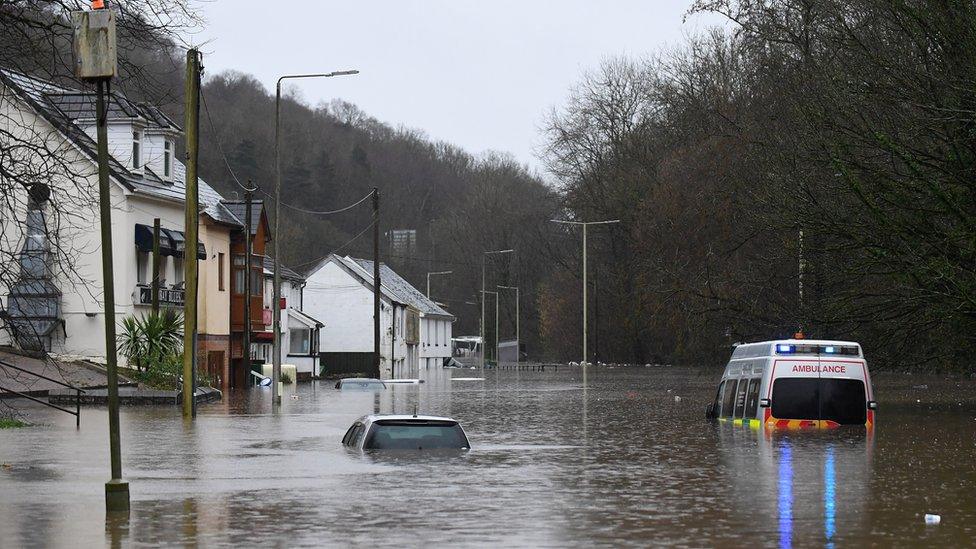Climate change: 'Sleepwalking into oblivion' coastal erosion warning
- Published
- comments
Eyewitnesses said this year's north Wales cliff fall was up to 40m (131ft) wide
Some areas of Wales at risk of coastal erosion could be "sleepwalking into oblivion" due to climate change.
Advisors have warned 2,126 properties in Wales are in danger of sea erosion and 36,000 are at risk of coastal flooding by the end of the century if coastal defences are not maintained.
Industry experts have warned people may find it harder to get a mortgage or insurance in some affected areas.
Natural Resources Wales said talks were under way in some communities.
Coastline erosion was brought into sharp focus in Wales when a major 40m (131ft) landslide fell onto a beach in Gwynedd in April.
Geraint Jones, who runs a bakery business on the Llŷn Peninsula, decided to take on a new cafe on the seafront in Nefyn weeks before the landslide happened nearby.
The slip saw parts of people's back-gardens sliding onto the beach below, and he described it as "shocking and awful" for those affected.

Geraint Jones's seafront cafe in Nefyn is just yards from the north Wales coast
Mr Jones has since been in touch with his insurance firm and feels reassured by the cafe's location above a sea wall.
"Hopefully we'll be safe," he said, adding that "with a business like this you've got to take some risks."
But making sure communities are fully aware of the challenges posed by coastal change in the coming decades needs more attention, according to Dr David Clubb, founder of Welsh environmental consultancy firm Afallen.
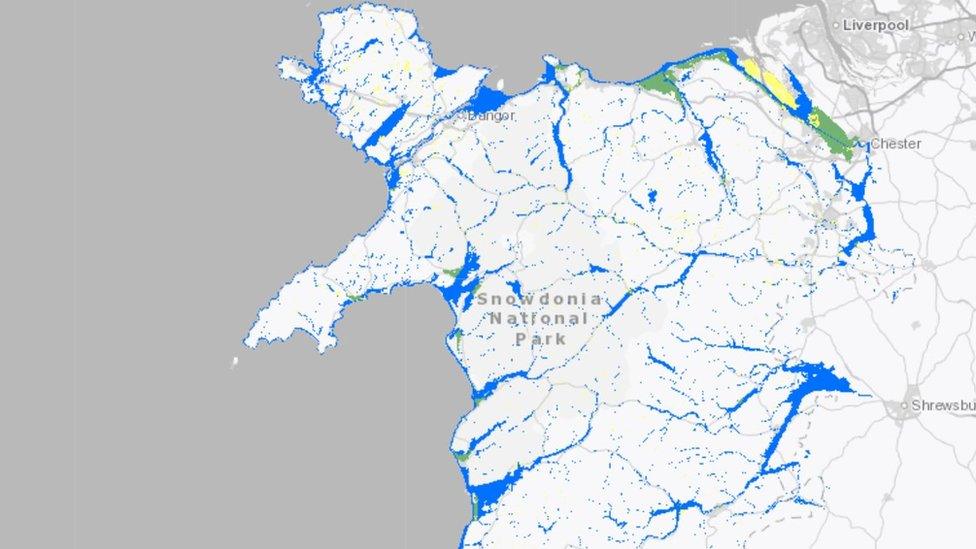
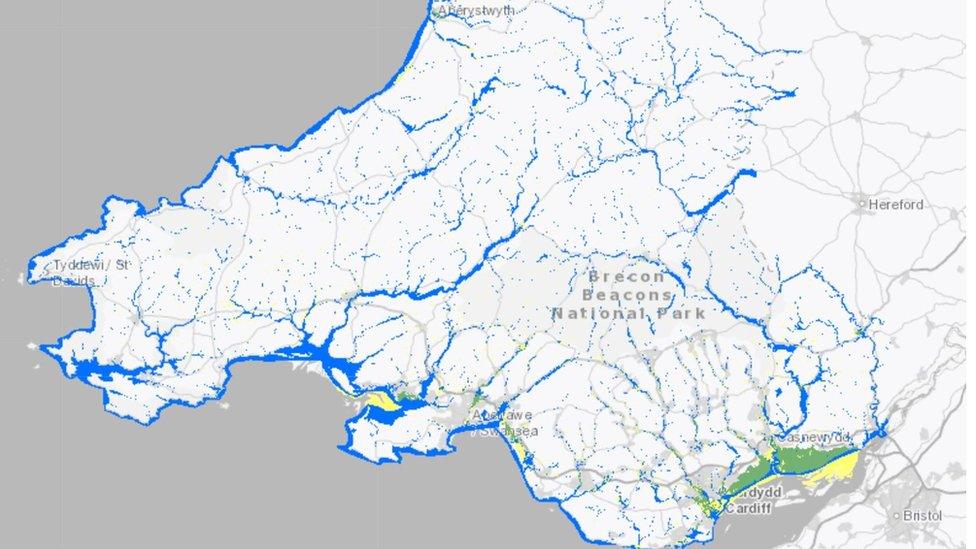
The blue on the map is areas most at risk of flooding without more flood prevention measures while areas in yellow are parts of Wales that have been flooded "in the past"
People are able to check the long term flood risk, external of their area or street online.
Why all in Wales should consider flood risk?
Even those "living on a hilltop in Powys" should consider the implications, Mr Clubb claimed.
"If Liverpool, Cardiff or Newport are flooded, where will those people move to?" he added.
"It's very much in the interest of all of the people of Wales to think about this and try and understand the data."
Mr Clubb pointed to global maps produced by US researchers Climate Central which predict parts of the country could be flooded annually, external from the sea by 2050.
Recently, the independent UK Climate Change Committee also warned areas on the west coast were facing "threats to their viability", external by rising sea levels and fiercer weather.
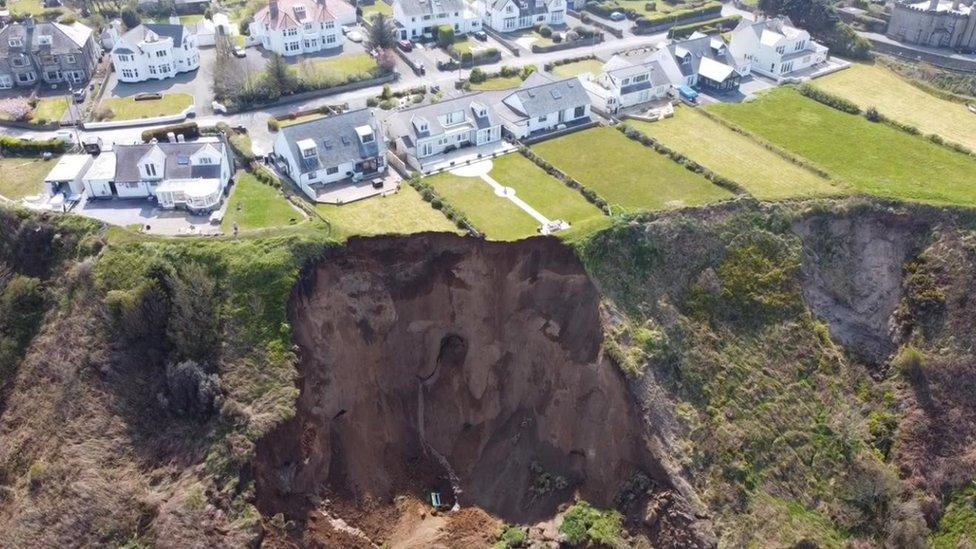
Homes lost parts of their back garden after April's landslide in Nefyn

Insurers have said coastal erosion is a "major factor for all insurers"
Tens of thousands of homes and businesses could be affected by flooding - with 10,000 already at risk now - and erosion by the end of the century.
Could poor coastline communities be worst hit by flooding?
The scientists called for "a thorough review... to develop a strategic, joined-up approach to managing this issue", warning that poorer communities along the coastline could be particularly affected.
"It's not even tomorrow's problem," said Owain Llywelyn of the Royal Institute of Chartered Surveyors in Wales, referring to Fairbourne in Gwynedd, a village facing being "decommissioned" due to the encroaching sea - with discussions already underway.
But further afield, it is "almost as if people are hoping it will go away", he said.
BBC Science editor David Shukman investigates the dilemma of where to save and where to retreat
"Perhaps we have been sleepwalking into what could be - though hopefully not - oblivion," said Mr Llywelyn.
The situation could lead to higher insurance premiums and banks "demanding much more than the normal deposit - 30% and upwards" for a mortgage in areas "where property is susceptible to attack from the sea", he explained.
How many properties in Wales are at risk of flooding?
Malcolm Tarling of the Association of British Insurers agreed that it was a "major factor for all insurers these days".
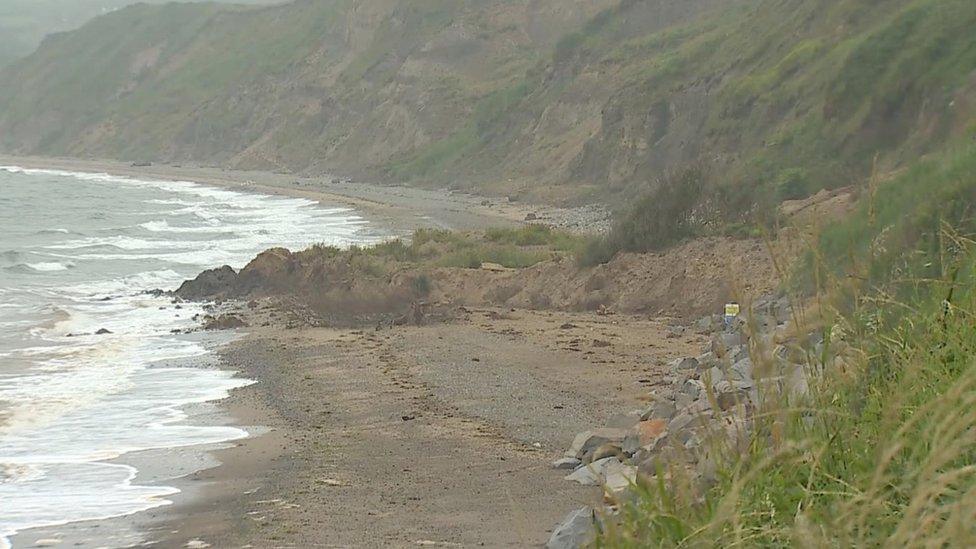
People have been advised to avoid Nefyn Beach after the landslide due to potentially unstable cliffs
"One in eight properties throughout Wales are vulnerable to flooding and that risk is likely to get worse," he said.
The industry recently published a "climate change roadmap" outlining how it could support efforts to cut carbon emissions and help customers make more sustainable choices like opting for an electric car or green boiler when they make a claim.
But the "sad reality" was that coastal erosion in particular was unlikely to be something insurers could help with - due to it being a "foreseeable risk that is happening gradually over time", Mr Tarling added.
'This isn't about bricks but people's heritage'
Natural Resources Wales said it has been working for several years with local authorities and the Welsh government to develop shoreline management plans for areas where climate change posed a particular challenge.
Sian Williams, the organisation's head of operations for north west Wales, said it was difficult territory that needed to be handled carefully so as not to frighten people.
"We're looking at decades from now in lots of these communities and that's quite difficult to get your head around, being involved in a conversation that will affect your children and grandchildren and future generations as well," she said.
"But it is really important that we're having those discussions - none of us want to be in a situation where we ignore what's happening."
Consultations were already underway in some communities that could be most affected, she said, with public service boards set up to improve cooperation across public services doing a lot of work on the issue.
"We can look at models, maps and data but it's vital to hear local stories and information," Ms Williams added.
"This isn't just about bricks and mortar but people's heritage and history too."

EXPLORE WALES FROM HOME: Join Iolo Williams for a guided tour of Pembrokeshire’s hidden gems
WEATHERMAN WALKING: Explore some of the most spectacular scenery that Wales has to offer

- Published20 May 2021
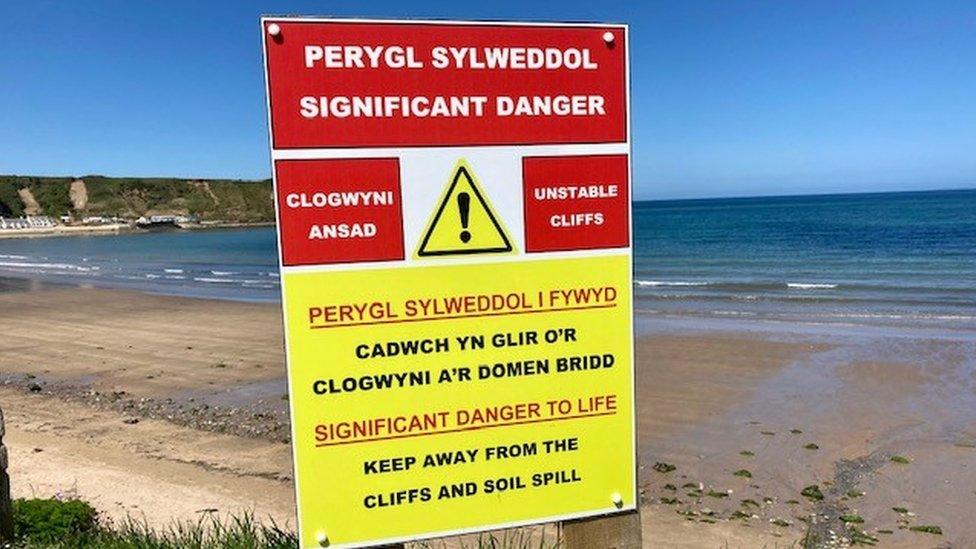
- Published19 April 2021

- Published16 June 2021
